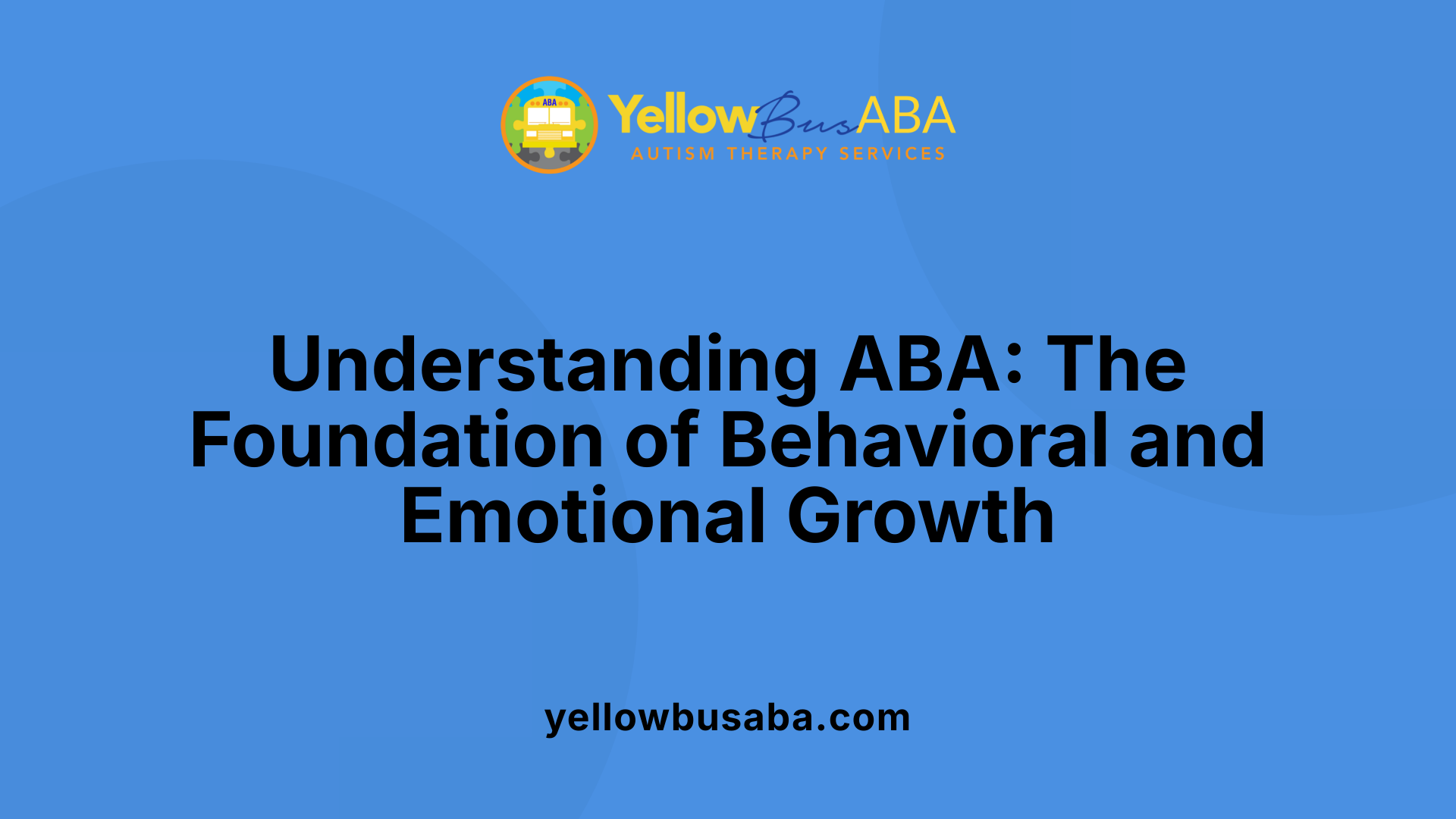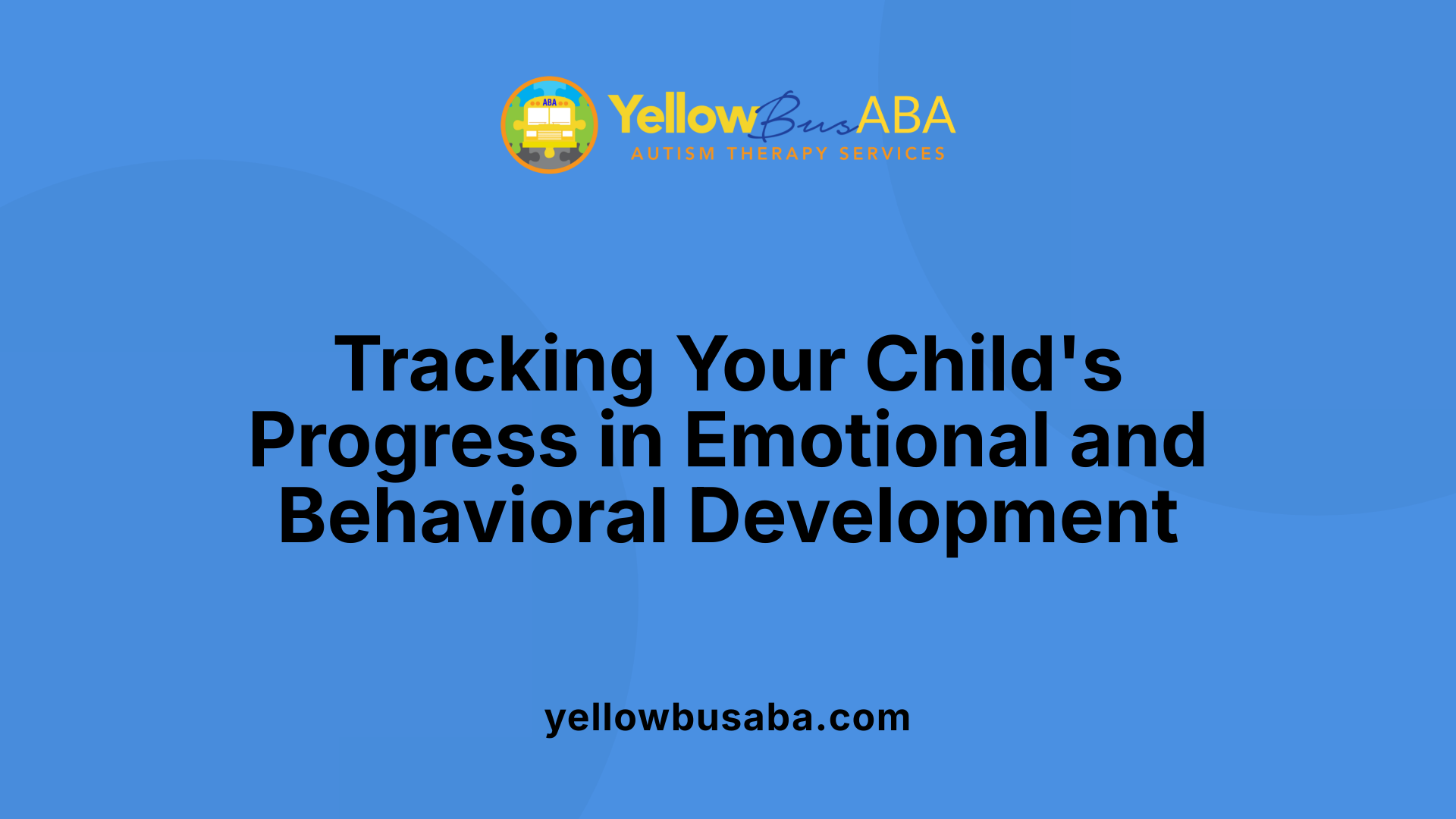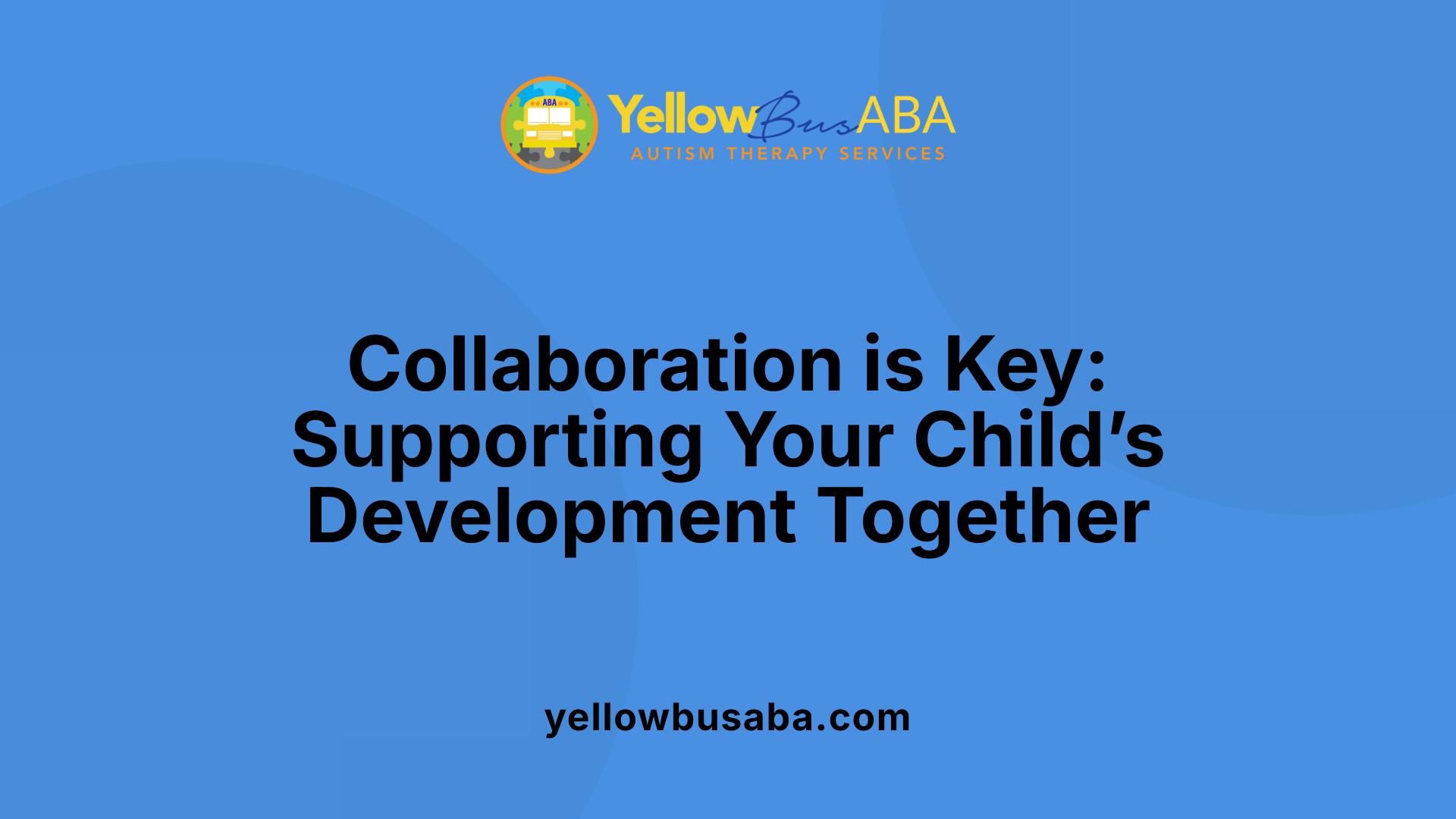Recognizing Emotional Milestones Beyond Verbal Progress
November 25, 2025
Understanding Emotional and Behavioral Growth in Autism Through ABA Therapy

Beyond Words: Exploring Emotional Milestones in Autism
While verbal communication is often the most noticeable sign of progress in children with autism, there are critical emotional and behavioral milestones that signify meaningful development beyond spoken words. Applied Behavior Analysis (ABA) therapy is uniquely positioned to identify and nurture these milestones, offering a holistic view of a child's growth that encompasses emotional regulation, social skills, and increased independence. This article delves into recognizing these nonverbal indicators of progress and how ABA therapy supports them, highlighting the importance of a broader perspective in measuring success for individuals with autism.
What Is ABA Therapy and Its Role in Emotional and Behavioral Development?

What is Applied Behavior Analysis (ABA) therapy?
Applied Behavior Analysis (ABA) therapy is a scientific, evidence-based approach that aims to understand and modify behavior through learning principles like positive reinforcement. It involves setting individualized, measurable goals based on a child's unique needs.
How ABA therapy targets behavioral and emotional growth
ABA therapy focuses on developing communication, social skills, behavior management, emotional regulation, and daily living skills. By helping children interpret their environment and understand social cues, ABA replaces disruptive behaviors with functional, independent skills. This process supports both emotional development and behavioral improvements.
Techniques used in ABA to promote functional skills
Therapists utilize strategies such as prompting, reinforcement, and discrete trial training (DTT) as well as naturalistic methods like Pivotal Response Treatment (PRT). Consistent therapy sessions and careful data tracking allow therapists to adjust approaches, ensuring steady progress. Parents also play an active role by reinforcing routines and celebrating achievements to support development.
ABA therapy is widely recognized as the most effective intervention for autism spectrum disorder and supports development across all ages, targeting skills crucial for independent living and emotional well-being.
How ABA Therapy Supports Individuals With Autism Beyond Verbal Skills

Customized Goal-Setting for Nonverbal Milestones
ABA therapy begins with setting individualized, measurable goals tailored to each person's unique needs and abilities. For individuals who are nonverbal, these goals often focus on alternative communication methods such as the use of gestures, picture exchange systems, or assistive technology. The therapy also targets behavioral and emotional skills that are essential for daily functioning and social participation, ensuring a broad developmental approach beyond just spoken language.
Behavioral and Emotional Skills Targeted by ABA
Beyond verbal communication, ABA therapy emphasizes improving social behaviors like sharing, turn-taking, and recognizing social cues. It also addresses emotional regulation by teaching children how to respond to environmental changes and manage challenging behaviors safely. Increased independence in daily living tasks is another priority, enabling individuals to perform essential activities that foster autonomy.
Examples of Progress Indicators Beyond Speech
Advancement in ABA therapy is tracked through continual observation and data collection by therapists. Important markers include enhanced social interactions such as initiating play or cooperative activities, reduced frequency and intensity of disruptive behaviors, improved attention span, and greater self-reliance in tasks like dressing or feeding. Celebrating these gains encourages further development and helps maintain motivation for both individuals and caregivers.
How does ABA therapy support individuals with autism?
ABA therapy supports individuals with autism by using a science-based approach to modify behavior and promote positive development. It involves breaking down complex skills into small, manageable steps and applying reinforcement techniques to encourage desired behaviors while reducing problematic ones. The therapy is highly individualized, with treatment plans designed by certified behavior analysts to target specific goals such as communication, social skills, daily living skills, and emotional regulation. ABA employs various techniques, including the analysis of antecedents, behaviors, and consequences, to understand and influence behavior effectively. When implemented early and consistently, ABA can lead to significant improvements in cognitive, language, social, and adaptive skills, helping individuals with autism achieve greater independence and quality of life.
Identifying Emotional Milestones and Behavioral Advances in ABA Therapy

What Are Key Nonverbal Milestones in ABA Therapy?
Nonverbal milestones in ABA therapy include important social and emotional skills such as improved social interaction, emotional regulation, and growing independence. For example, children may begin sharing toys appropriately, taking turns during play, and showing gestures like waving or pointing to communicate. Emotional regulation is seen when children manage their reactions better during challenging moments, reducing meltdowns or outbursts. Increased independence might involve completing daily tasks such as dressing or feeding themselves with less assistance.
How Do Therapists Measure and Track These Milestones?
Therapists use careful observation and systematic data collection to track progress on these milestones. At the beginning of therapy, individualized, measurable goals are set based on each child's needs. Progress is then monitored through ongoing sessions where therapists record behaviors, responses, and skill development. This data-guided approach allows therapists to analyze improvements and adjust techniques to best support each child’s growth.
Why Is Reduced Challenging Behavior and Increased Social Engagement Important?
A decrease in challenging behaviors like tantrums or self-injury signals that a child is successfully replacing disruptive actions with functional skills. This progress improves the child’s safety and quality of life. Simultaneously, increased social engagement—such as initiating interaction, responding to others’ cues, and participating in group activities—enhances emotional development and lays the foundation for meaningful relationships. Together, these advances reflect meaningful growth in core areas targeted by ABA therapy, supporting children toward greater independence and social success.
The Role of Professionals and Families in Recognizing and Encouraging Progress

Who typically provides ABA therapy sessions?
ABA therapy sessions are delivered primarily by licensed professionals known as Board Certified Behavior Analysts (BCBAs). These individuals possess advanced degrees in psychology or behavior analysis and hold specialized certification through the Behavior Analyst Certification Board (BACB). Alongside BCBAs, trained therapists such as Registered Behavior Technicians (RBTs) and Behavior Analyst Assistants (BCaBAs) often play essential roles in direct service delivery, working under BCBA supervision.
These professionals are responsible for assessing client needs, designing individualized treatment plans, and implementing strategies to promote improvements in communication, social interaction, behavior management, and daily living skills. Therapy takes place in diverse environments—including clinics, homes, and community settings—allowing for flexibility and personalization.
Importance of data collection and observation
Therapists closely monitor progress by systematically collecting data and observing the child during sessions. This ongoing documentation allows them to make objective assessments regarding which interventions are effective and whether adjustments are necessary. Tracking improvements in areas such as verbal or nonverbal communication, social skills, behavioral responses, and independence helps ensure that therapy remains responsive and goals remain attainable.
How parents support emotional and behavioral growth outside therapy sessions
Parents play an indispensable role beyond therapy sessions in encouraging their child's development. Establishing consistent routines at home reinforces the skills taught during ABA therapy, helping children retain and generalize new abilities in everyday environments. Recognizing and celebrating small achievements fosters motivation and self-esteem.
Maintaining open communication with therapists allows parents to stay informed and collaborate on strategies suited to their child’s needs. Keeping track of improvements and encouraging positive social interactions also supports emotional growth and behavioral regulation, facilitating a more comprehensive and meaningful progression toward independence and well-being.
Expected Long-Term Outcomes: Emotional Growth Beyond Verbal Communication

How ABA therapy fosters emotional regulation and social understanding
ABA therapy plays a crucial role in helping individuals with autism develop emotional regulation by teaching them to recognize and respond to emotional cues. Through targeted strategies, therapists guide children to interpret social signals, manage their reactions, and replace disruptive behaviors with functional alternatives. This emphasis on understanding emotions enhances social interactions and supports better emotional self-control.
Improvements in daily living skills and independence
Beyond communication, ABA focuses on daily living skills that promote independence. Children learn to navigate routine tasks such as dressing, feeding, and personal hygiene through consistent, measurable goals set by therapists. Progress in these areas means individuals gain greater autonomy, which improves their quality of life and reduces reliance on caregivers.
The broader impact of early and consistent ABA intervention on quality of life
Early intervention with ABA is linked to substantial long-term benefits. When therapy is consistent and tailored to a child's needs, it fosters sustained improvements in communication, behavior, and social skills. This foundation enables better adaptability in various environments, facilitating smoother integration into school and community settings. Moreover, consistent therapy encourages skill retention and gradual mastery, leading to meaningful life outcomes.
What are the expected outcomes of ABA therapy for individuals with autism?
Expected outcomes include enhanced communication skills—both receptive and expressive—and improved social interaction abilities. ABA therapy promotes recognition of social and emotional cues, emotional regulation, and generalization of skills across different settings. It also effectively reduces challenging behaviors and nurtures positive ones through reinforcement. Early and intensive ABA intervention drives gains in cognitive, adaptive, and social functioning, supporting successful educational and social integration. Ultimately, ABA equips individuals with essential life skills and emotional growth beyond verbal communication.
Broadening Our Understanding of Progress in Autism Therapy
Recognizing emotional milestones beyond verbal communication allows for a deeper appreciation of the growth achieved through ABA therapy. While verbal skills remain important, observing advances in emotional regulation, social interaction, and daily independence provides a more comprehensive picture of a child's development and well-being. ABA therapy’s individualized approach, professional support, and family involvement collectively empower children with autism to reach these critical milestones, enhancing their overall quality of life. By broadening our lens beyond speech, we support a richer narrative of success and foster hope for continued progress on many fronts.





.avif)
